March 2017
Colour in our garden this week:
27th March - Water, water everywhere, and I do mean everywhere! After our break in Barcelona we went down to the plots yesterday, planning to get lots done. Abi planted a 5m bed of onion sets on #145, and I set to with the seed potatoes, and the Second Earlies (Kestrel and Maris Peer) went in with a nice cosy blanket of manure around them, which I hope will counteract the scabby skins caused by limy soil.
All was going well, and Abi went to light the stove to make tea. "Oh good" he called "The council have turned the water back on!" and then there was the rushing sound of water, a lot of water! (The water spout was four times the height it looks in this photo) I rushed round turning on other taps to try to reduce the pressure, which helped a bit, before I thought of taking a picture. The fittings, a foot deep under the ground, had burst apart, and needed to be dug out by hand to try to find all the pieces. It took trips to two different DIY stores before we got the correct parts. By the time we returned, nearly an hour later, the ground under and around our big shed was flooded and gallons of water had poured out all over the slabbed area and onto the verges too. Abi got soaked to the skin, but luckily managed to secure the new fittings, working up to his elbows in freezing water to shut off the deluge
I didn't manage to get all the Maincrop potatoes planted, as the evening was drawing in by then. If you remember, we have a mixture this year, looking to taste a few and see which we really enjoy eating. I couldn't find a pencil to write labels, so I planted them a row at a time in alphabetical order: Ambo, Carolinus, Inca Bella, Jazzy, Mayan Gold and Pink Gypsy. That leaves three rows of Kondors still to plant.
A picture of a planted potato bed is not very interesting, especially as I have planted them "flat" this year, planning to earth up growth as it appears. This is because when I have planted them under a long mound in past years, shoots have come out of the sides of the mound, making it difficult to further earth them up to protect them from frosts. This year I shall earth up once the shoots are above the ground and see how that goes. Anyway, here is a short row of seed potatoes in their trench, looking hopeful!
-
The Brussel Sprout plants are now growing flower shoots, and so will not be producing more sprouts. This has been the best crop of sprouts we have ever had, and our friend's chickens can now enjoy the remains of the plants
-
Leeks are still going strong and have not yet developed flower stalks inside them. These ones have not been affected by Leek Moth larvae, unlike the earlier variety. May be just coincidence though, but good, nonetheless
-
Raggedy Jack Kale is still growing lots of fresh leaves. This large handful was used to make Allotment Pakoras, together with a leek and some of the shallots from our store (The onions are now finished)
At home in the greenhouse, the small chilli, pepper and aubergine plants now need feeding to ensure they continue to grow, as the compost mix will be coming to the end of its nutrients by now, I'm sure. Adding coir does make for a mix that gives good aeration for healthy root growth, but is completely sterile, perlite has no nutrients either and the proportion of multipurpose compost can only keep plants going for a couple of weeks before they begin to starve. Virtually any commercial liquid feed, diluted to half the recommended strength, will do: I have some from B&M I bought last Summer. Home made comfrey or nettle feed would also be suitable.
Muscari on #146 around the plum tree smell gorgeous and the bees really like them too. They come up reliably every year and have mulitiplied a lot since they were planted five years back. I never know with tulips if they are going to survive from year to year though, so I am really pleased to see that the ones down by our seating area are showing nice fat buds. Alongside them are some self sown Honesty, which is another high value plants, with its purple flowers being followed by silvery seed pods that last well into the Autumn.
I hope you have found this update interesting, and I shall be writing more soon. Thank you for sharing our progress.
19th March: Posting a day early this week as we are visiting Barcelona for a few days and wanted to get this week's Blog written before we go. We have worked really, really hard this week and managed to keep up with the rather ambitious plan drawn up back in January for sowing and planting. I've just come in from finishing pruning the roses in the garden, and I must admit it is nice to sit down with a cup of coffee: it feels well earned!
The roses have been cut back quite hard, as some were taller than the garage, and as they are good strongly scented varieties we wanted flowers back down at nose level. A good feed of Blood, Fish & Bone and they will soon put on new growth... very forgiving plants, roses. The large old William Lobb shrub rose amongst the dwarf fruit trees has had its annual haircut too. It is also one with a strong scent, but I am not keen on it waving out across the path, as it is the thorniest rose we have, so keeping it under control is key if we are avoid laceration later in the year. It doesn't seem to mind. As I said, roses are very forgiving.
We try to mainly choose plants for the garden at home which have scented flowers, and one of the gems blossoming now are the Skimmia japonicas in large pots outside the back door. The clouds of pink and white flowers, the scent of which reminds me of perfumed soap, fills this end of the garden with its perfume on a warm day. These are male plants, that only produce pollen: we have a female plant alongside them which has insignificant flowers but once fertilised, thanks to the industrious bees, grow sealing wax red berries that last all through Winter. Wokrs well!
Pretty little violet flowers from a "bargain basement" find at the local Garden Centre have come up trumps, and I am glad it is in the trough under the kitchen window, as at that height it is much easier to enjoy a little sniff on the way in and out, than it would be at ground level.
I noticed today that the fuchsias in this trough have survived the Winter, and have lots of shoots visible amongst the remaining leaf litter. This may have helped protect them a bit of course. They were only rooted cuttings when they were planted last year, although they did manage a few flowers, so I am hoping that this year they can give us a good display. Not scented of course, but their beauty makes up for it. Sonething sweet-smelling will fit in alongside them, I'm sure!
I wasn't sure if our Magnolia stellata had survived its rather drastic prune when we moved it from amongst a tangle of brambles last Spring. It had very few leaves in the Summer and looked extremely sorry for itself. But just look.... masses of furry buds that started to open today into beautiful white stars. They are set off well by the leaves of the Irish yew behind them, which is a bonus
It just shows it is worth giving plants another chance. The Clematis amandii in the header photo was rescued from a derelict plot, as a tiny plant in a two inch pot that hardly contained any soil. And a year later it is rewarding us with a beautiful display of almond scented flowers against the shed on #145. We shall have to put some wires aross the roof, as this is a very vigorous plant and will need further support. Very pleased with it so far!
It hasn't all been about admiring flowers though! As planned, the first early potatoes were planted out on #146: 4 Charlottes, 4 Yukon Gold and 24 Lady Christl. They are down quite deep, so shouldn't poke their heads up for a while.
Onion sets also went in: the bed has been ready for a couple of weeks and just needed a rake over to soften up the surface a bit. I find if you try to poke sets in hard soil the root plate can be damaged, as well as restricting the initial root growth in compacted soil. 24 each of Sturon, Stuttgarter and Red Baron. They are about 25cm apart in each direction, so hopefully they will have plenty of space to develop good sized bulbs.
It was almost like instant gardening planting out the broad beans, early peas and mangetout. The plants have sat in the large cold frame for a while, and roots were beginning to grow ot of the bottom of their modules... so time to plant them out!
-
Half of these are Red Epicure, and the other half Wizard Field Beans. The sticks are to keep the pigeons from eating the leaves, not to support the plants. I'll put up some cane and strings once were are back
-
Kent Blue and Indian Golden Mangetout are planted in the shelter of what remains of the mini-tunnel. They grow tall, and will need some strong support, but for now, they can continue to grow away out of the wind
-
And the Hatif de Annonay early peas are in the large cloche. Not grown these before but I guess they will need some twiggy sticks as support. Have to make sure they don't poke holes in the cover though, before it comes off next month
Sowed carrot seed under the two plastic cloches put down to warm the soil: Nominator. After last year's sucess with seeds tapes I bought these from Kings Seeds, and the amount in the packet was sufficient for six 1m rows. These are a new variety to me, and although they are advertised as resistant to carrot fly, they will be covered with enviromesh with the others because the net reaches right across the bed.
I also sowed some Early Nantes 2 under the large cloche, in pinches to grow into bunches of carrots with minimum of thinning, as well as some beetroot (Red Ace) and Turnip (Milan White) Just one row of each, as these are for an early crop. I shall sow more in a couple of weeks' time, without cloche protection.
At home in the greenhouse, the aubergine plants are growing out of the top of their plastic cups already, and the chillies and peppers are growing steadily. There are far too many plants for our needs, and so once they are a little larger some can be re-homed.
This year I am trying hard to think about a succession of crops such as lettuce, rather than have twenty ready at a time, so pricked out half a dozen seedlings to grow on on individual modules. I think if I delay pricking more out for a week or so, the second lot might mature later, and the remaining ones can go straight into the ground, to perhaps be even later. Worth a try!
The onion plants are now in the large cold frame at the plot, which gave me a little bit of space on the staging, so now, in trays, there are seeds of Cosmos, Zinnias and Asters, and in a pot some Spanish Flag seeds. Really pleased to see the first of the Coleus seedlings sown about three weeks ago is developing purple markings on the leaves... I was a bit concerned they all seemed to be lime green, but hope for a colourful display is on the horizon!
The Yacon plants are all growing too, which is exciting. Not sure when they could go out into the cold frame though, as they sound quite tender. I shall have to look into this as they will need larger pots soon
The greenhouse is of course jam packed, as you can see from this view of one side, but the pelargoniums will be outside soon and then space can be given to potting up begonia tubers. As I said, there is a plan ... I just have to work hard at sticking to it!!
The polytunnel trench on #145 got underway this week. Covering the ground with tarpaulin for a year has certainly killed off many of the weeds, although nettles seem to have spread themselves sideways into uncovered areas. Digging these out, especially where their roots are entwined with the buried sections of the wire fencing, is going to be a bit of a mission for sure! Abi has said this will be a priority when we return, whilst I plant the second early and maincrop potatoes on #145, as well as the onions there too. Oh, yes, and clear a section of weediness for a cutflower bed too. Hmmmm. Let's hope it doesn't rain too much that week, then.
To finish this week, here is a view on #146 from the gate. Several beds still have weed growth or are covered, but that is fine. We are dealing with things in the order of importance, and all will be done in the fulness of time... we hope
PS The blue pipe tunnel that is askew will be re-sited in the bed where the cloche currently is. It is not some strangely angled growing system!!
13th March - What a difference a week makes!! Having been on our annual badminton pilgimmage to the All England in Birmingham, the difference when we returned was clear to see: flowers everywhere, insects busy feeding, frog spawn in the pond, radish seedlings doubled in size, chilli plants with proper leaves, potato haulms visible in the bag in the greenhouse and the sweet pea plants ready to pinch out... wow!!
Time to knuckle down and get those first early potatoes in the ground...but... there were still a few parsnips in the bed, that had sat out the winter, leaefless and all but invisible. They have suddenly grown tufts of fresh green leaves and so were easy to spot. I was amazed at the size of their roots, and how beautifully straight almost all of them were too. A couple of cosily entwined roots were allowed home as they are large enough to use. There is a bit of canker damage on the shoulders of some of them, but this can be easily cut off when they are peeled. This week we shall be having a beautiful buttery parsnip mash, with our roast dinner, some tasty parsnip soup and perhaps a cake too. Any left will be blanched and frozen. Lovely!!
And the bed just needs a dressing of rotted manure in the morning and those spuds will be in!!! A couple of days earlier than usual, but the ground is warm enough for them to grow away. Fleece will be at the ready however, as there will doubtless be frosts to come.
The last of the outdoor beds on #145 was edged with wood this morning, so the second earlies' home for the season is ready too. Next comes the trench for the polytunnel cover... say it quickly it doesn't sound too bad, but I reckon it'll be hard work!
One of the small cherry trees has some open blossom already, but it seems unlikely that it will set fruit, for two reasons: few bees around yet, and frosts almost certain to damage any fruit that does set. Looks pretty though!
As I looked round today, it occurred to me that many of our flowers have cost us nothing, and give us so much enjoyment year on year: the cherry tree was a rescue plant from the tip.
The primroses were a gift from a plot neigbour last year, the pulmonaria from a plant swap two years back, and they both seem to have settled in well.
The blue hyacinths were planted out last year from a pot of bulbs bought to flower early indoors, and they smell amazing in the warmth of the sun, filling the air with their perfume.
There is a drift of muscari growing under our plum tree, having multiplied hugely from the ten bulbs planted a few years ago. (Photograph to follow when they are fully open)
And then there are the daffodils dancing alongside the pond on #146, which were planted when we tipped out an old tub of compost and saw the bulbs in there... they flower every year without fail, even in the shadow of a massive buddleia, which was also a freebie actually, grown from a cutting. Plenty of self sown seedlings around too, candytuft, calendula, nigella and foxgloves abound, and will fill the plot with colour throught the Summer months. Amazing what grows for frree, isn't it?
Even though we haven't done all that much ths week, plants just carry on growing without us, thank goodness!! I'll let you know how next week goes!
6th March - Burgeoning seedlings everywhere! What a difference a week makes: at home in the greenhouse the chillies, sweet peppers and aubergines have all been transplanted into their individual transparent drinks cups, taking up masses of space on the staging. I found out a few years back that giving them their own cup like this keeps them out of draughts and enables root growth to be monitored easily. I use a three part mix of Jack's magic compost, coir and perlite, which gives good drainage but allows for sufficient water uptake at the same time. The cups are only part filled to begin with, with mor emix being added as root growth progresses. Nutrients are in short supply so once a week they are given a very dilute feed of tomato fertiliser or comfrey feed whichever is to hand, and they grow apace. The cups are inexpensive and it is easy to make drainage holes through about four at a time with a screwdriver heated over the gas burner on the cooker. Smells a bit, but all in a good cause! I am still using some that are now four years old so certainly good value. They get a decent wash in the dishwasher at the end of the season and are then stored under the staging.
Those tiny antirrhinum and coleus seedlings have been pricked out into deep trays, with some help from our youngest granddaughter, who made the holes in the compost mix for the roots to nestle into. Four days later, they do seem to have survived, so I am fairly optimistic that they will develop into reasonable plants eventually. Hard to believe such titchy things will even flower, let alone give a good display!
Out on the plot, the Cherry Belle radish seeds have germinated under their cloche, which is a sign Spring really is on the way. You can just see them breaking the surface in the is picture. Weed seeds of course seem to come up with no effort, whereas the seeds of things we want to eat always seem to need a little extra encouragement!
We have worked hard this week, not just with transplanting seedlings but with getting beds ready for plantng too. Abi has finished digging out the final bed on #145, where the second early potatoes will be set out soon, and I have dug in the manure spread last Autumn where maincrop onions will be planted, whilst on #146, the bed for broad beans and wizard beans is dug over and ready. The beans are still sitting in their modules in the giant cloche, slowly increasing in height, so as soon as they have three pairs of leaves they can go in the ground.
The weather is still very mild, but we have had a lot of rain this week, so keeping the beds covered with black plastic means the soil is not waterlogged, thank goodness, as well as being a little warmer too.
This year we seem to be on quite a tight schedule for sowing and planting, and it seems to be turning into something resemmbling a military manoevre: next week we are away, so the following week is potato planting, beetroot and early carrot sowing, planting out the early peas and mangetout (currently in modules in the garden) and sowing cosmos and zinnias in modules in the greenhouse, then away for another week before getting going then with everything else, not the leats of which will be the tomaotes. In amongst all this we have to get the trenches for the new polytunnel dug too. Not much to do really: no laughing please. Nothing like a challenge!
And this is the very time when we are so grateful for the crops that just get on with it, with a minimum of fuss or attntin: cue rhubarb. Our plants came from my Dad's garden, where thet cropped year after year without even a blob of compost coming their way. We do give them an annual mulch of compost, or, this year, nicely rotted manure, and look how they reward us! Stewed rhubarb when we get back, for sure.
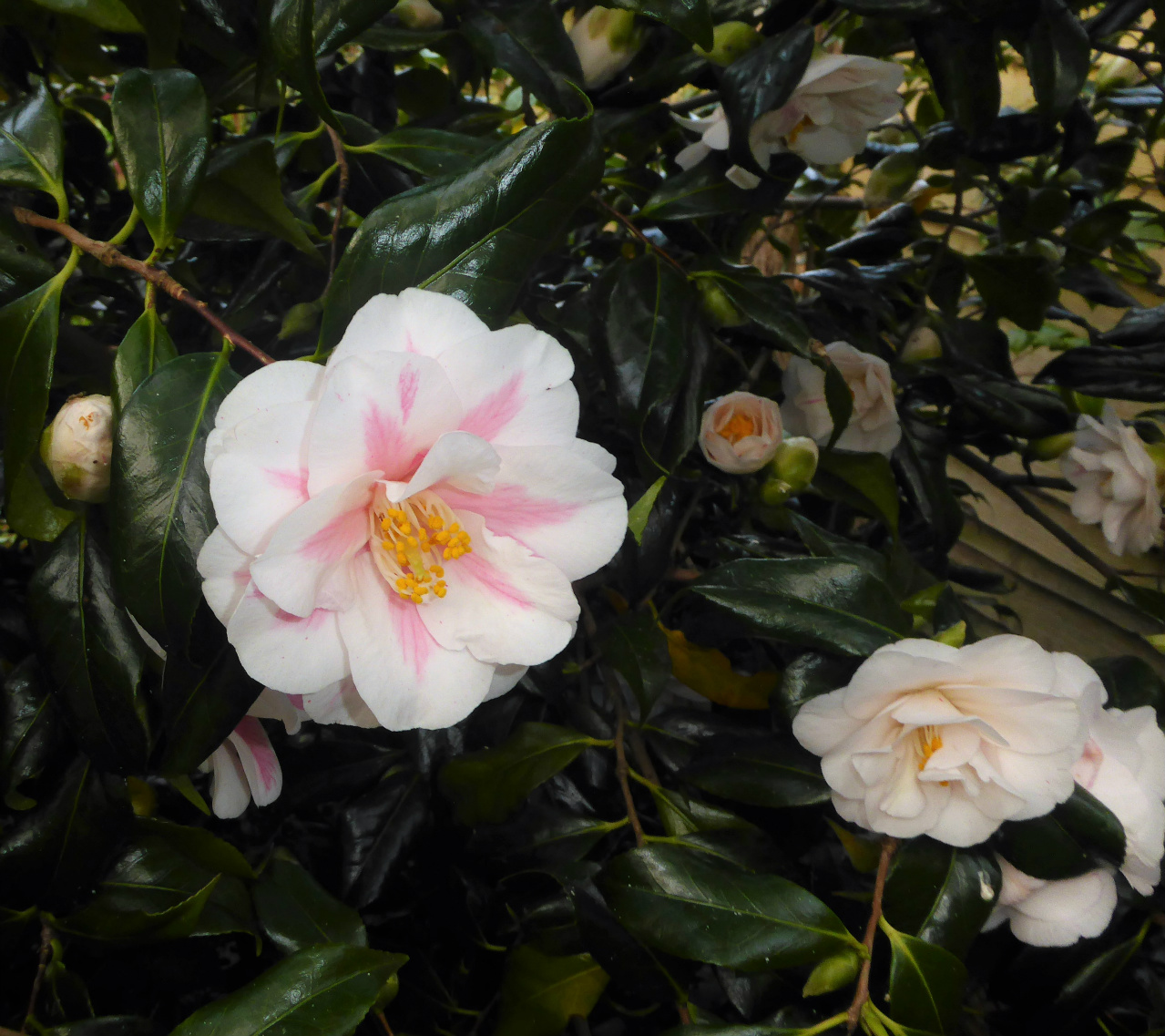
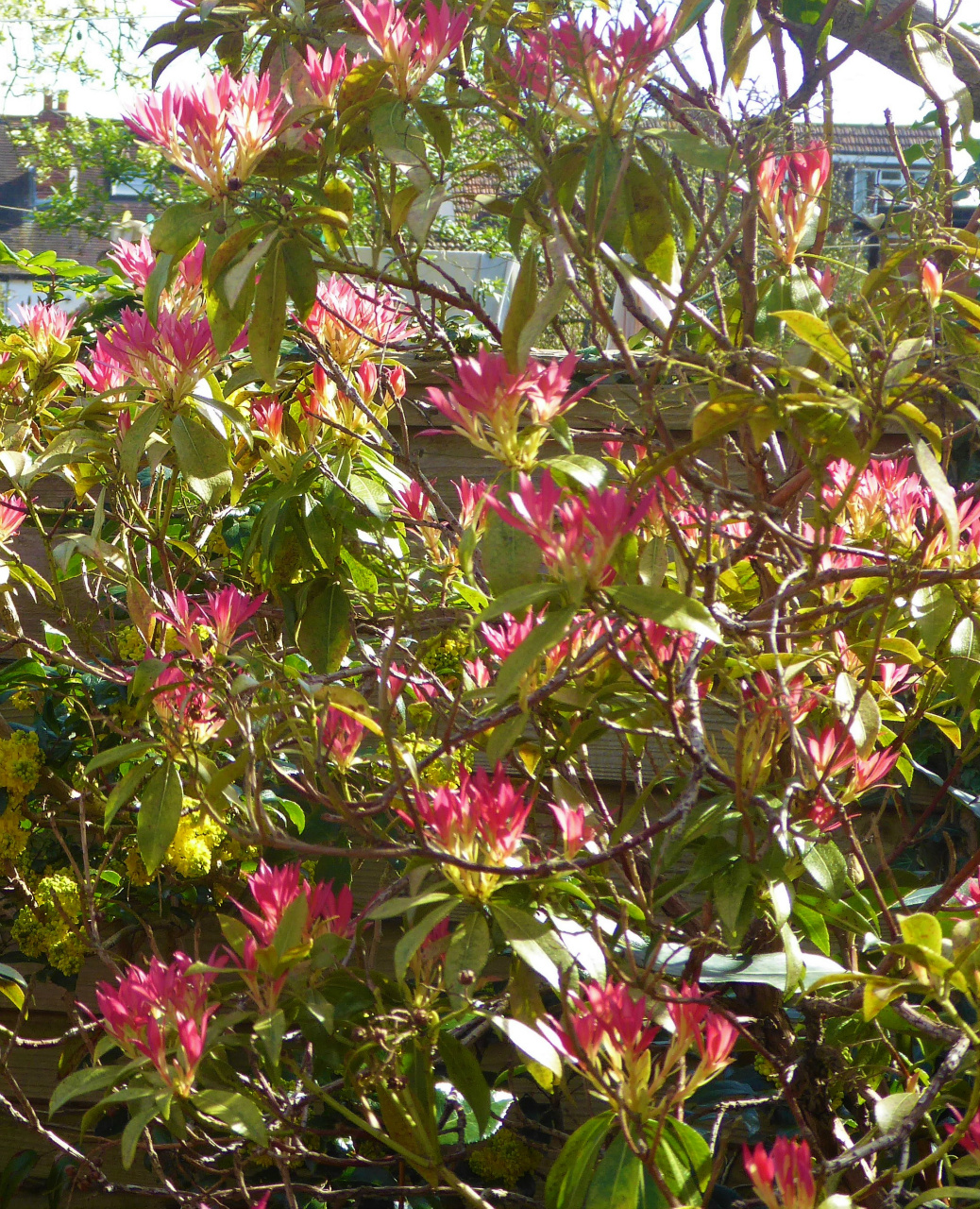

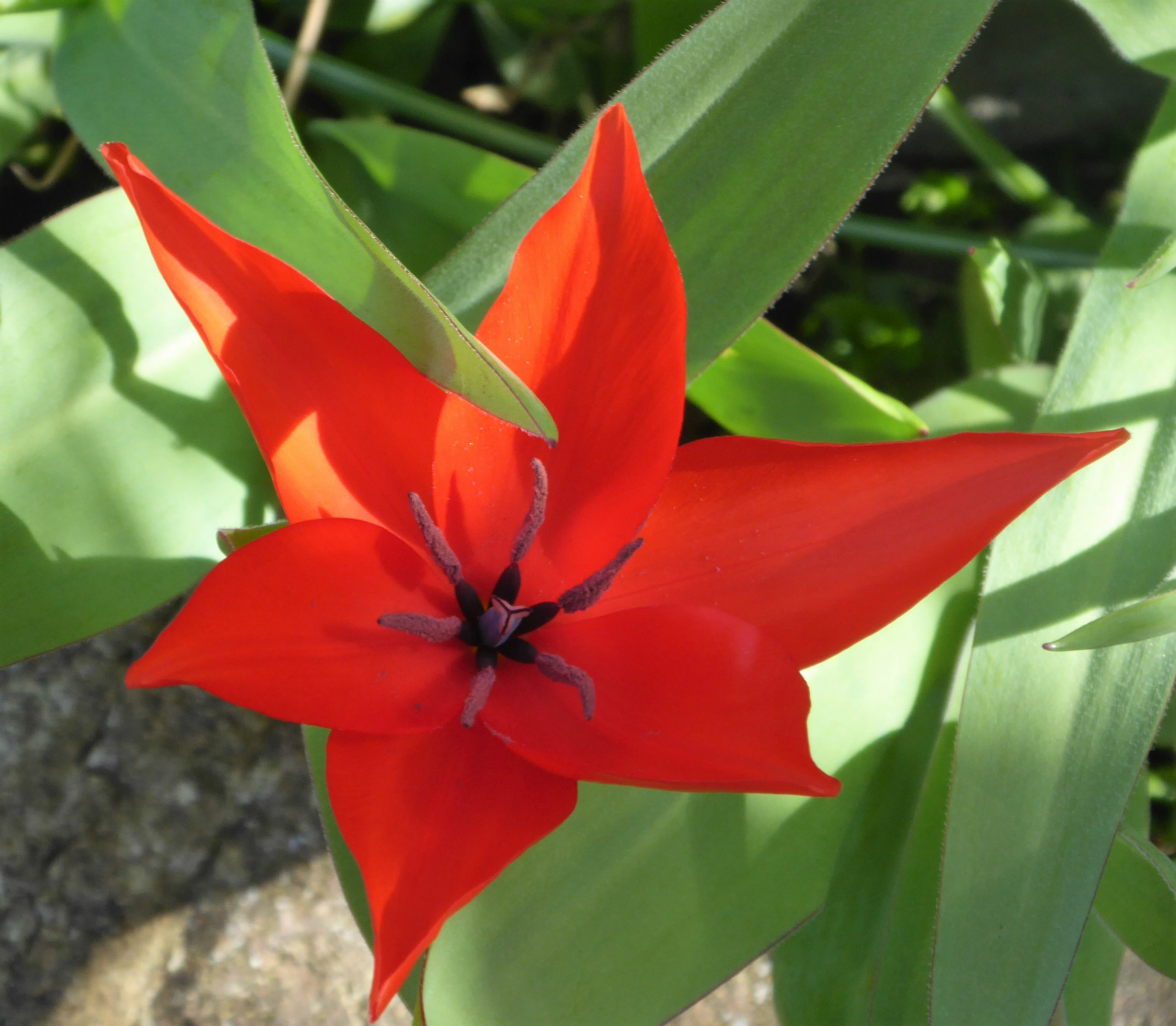

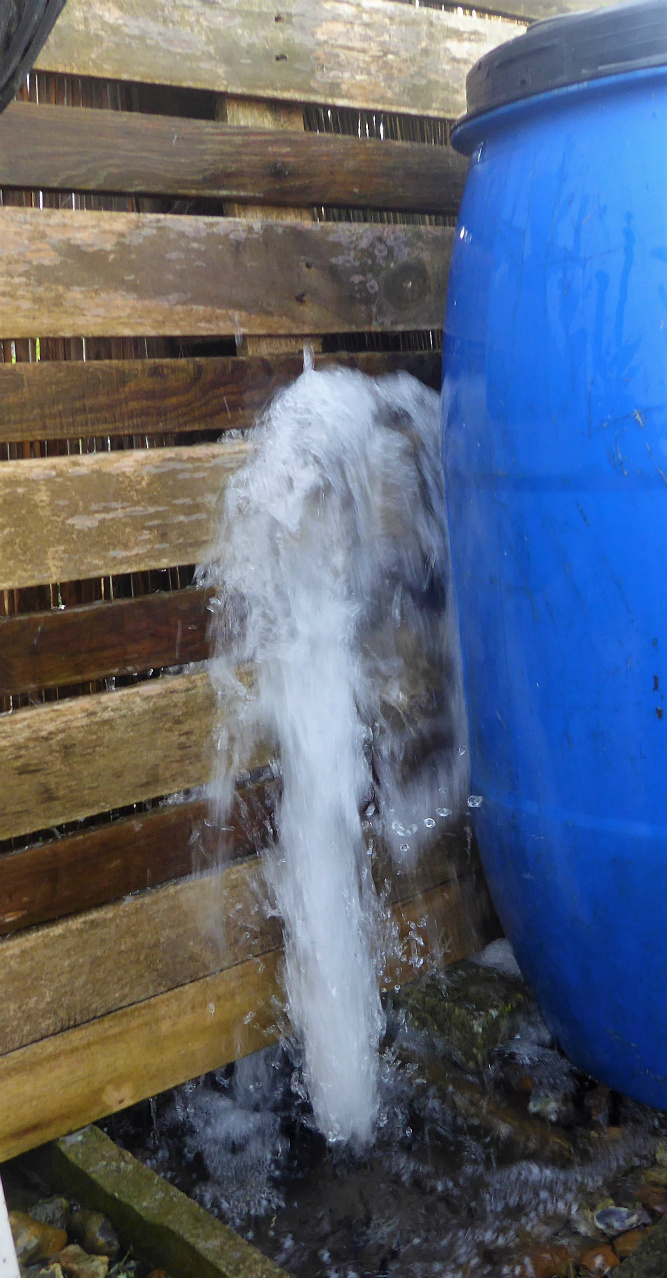
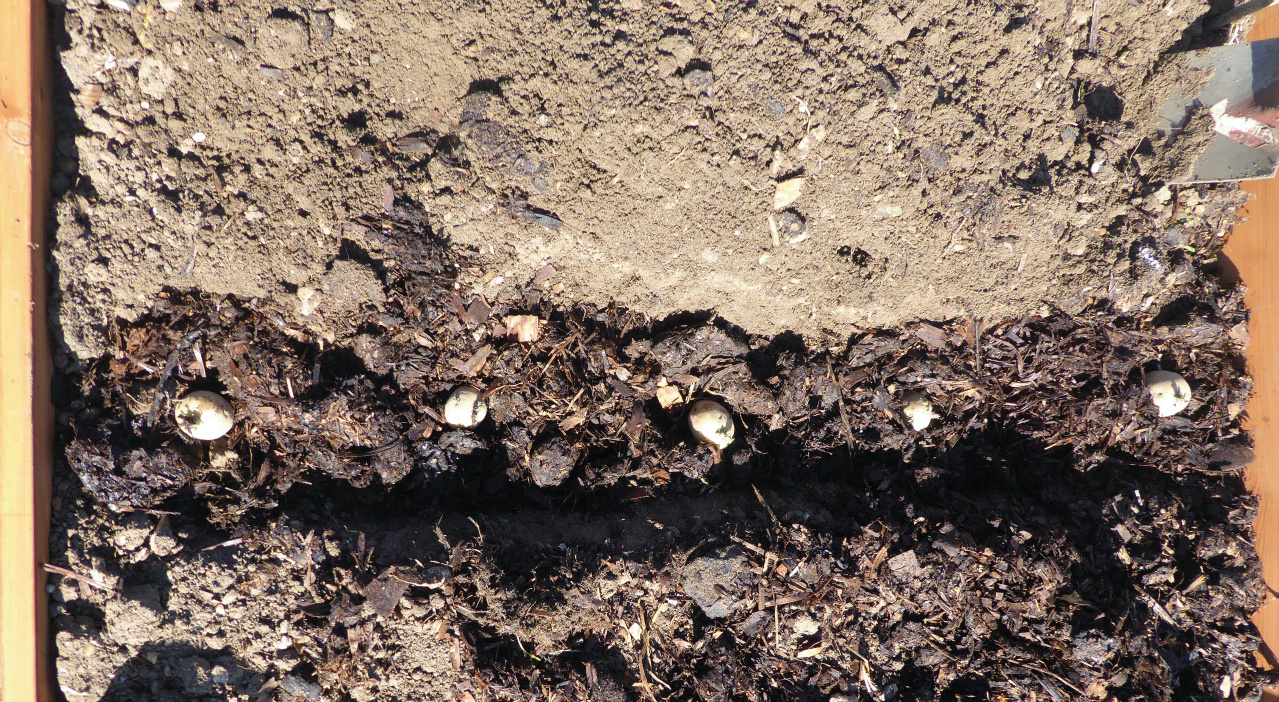

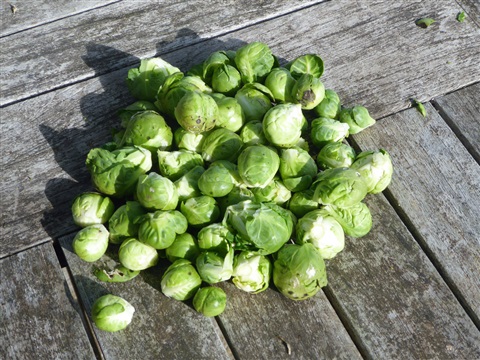

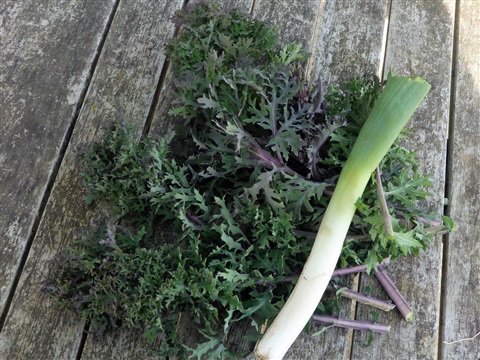
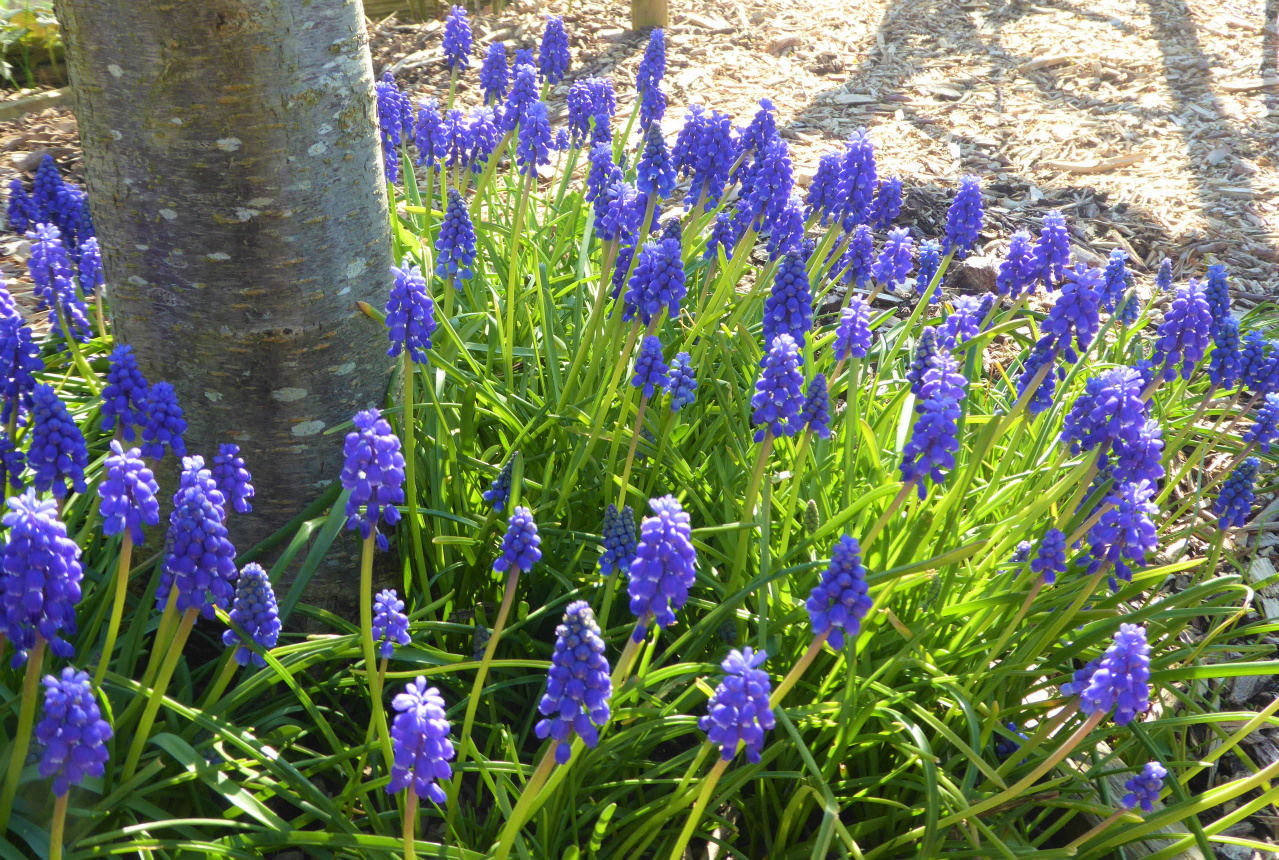
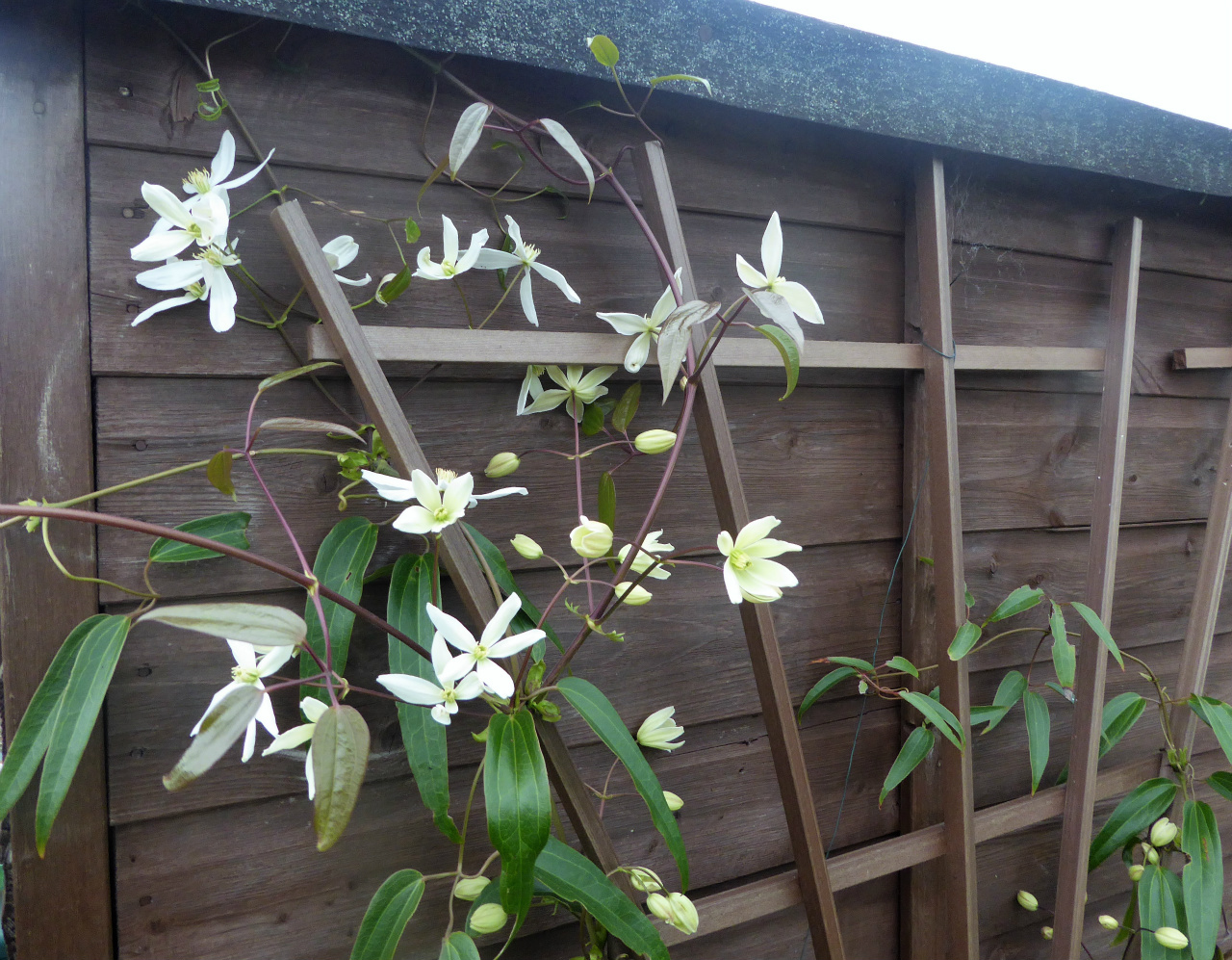
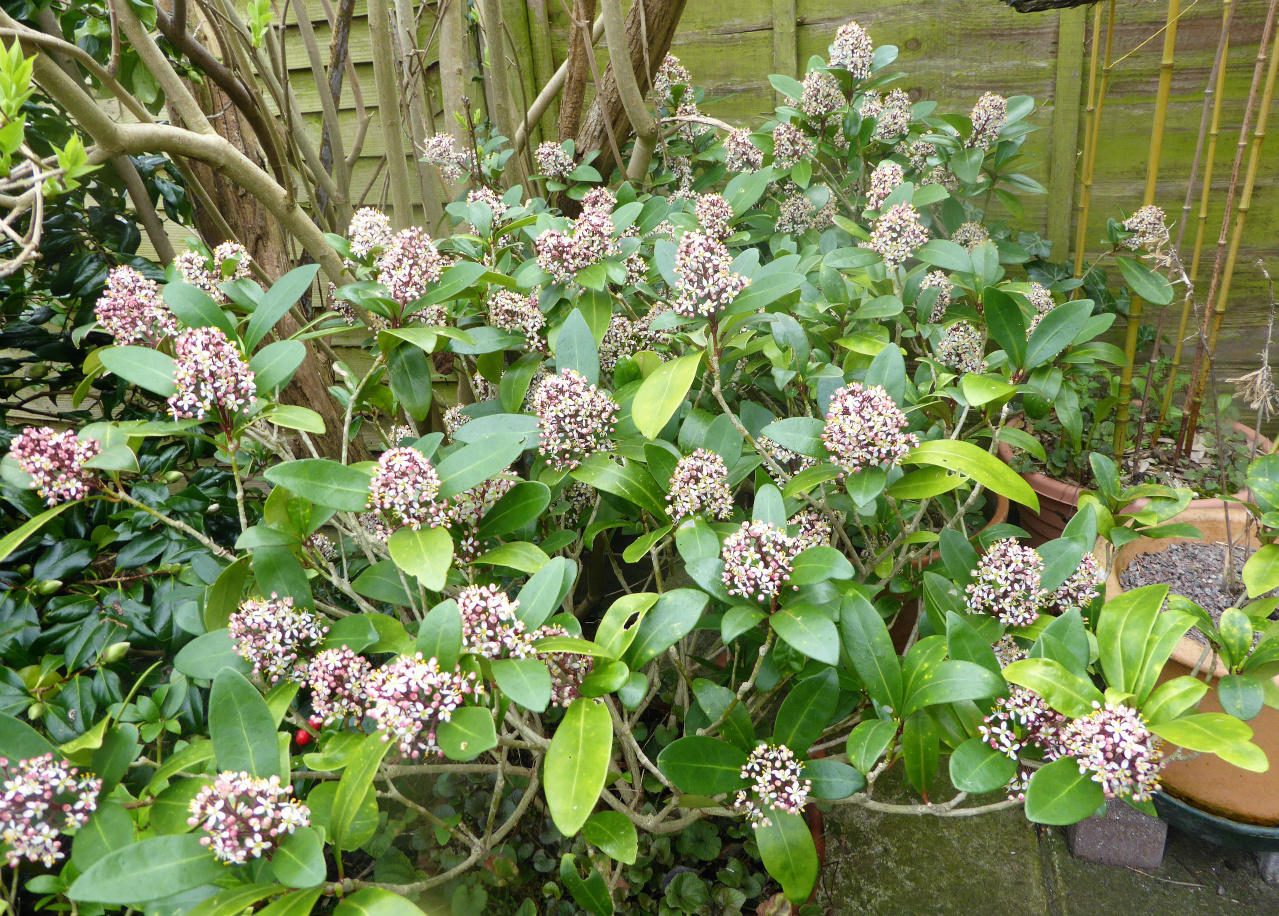
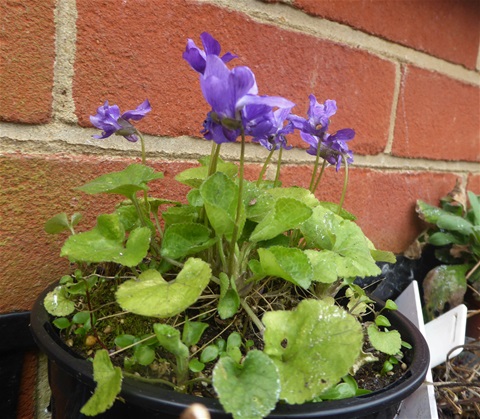
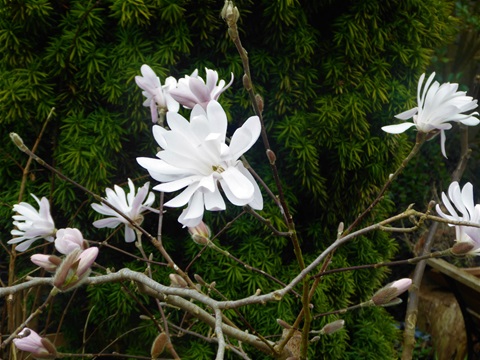
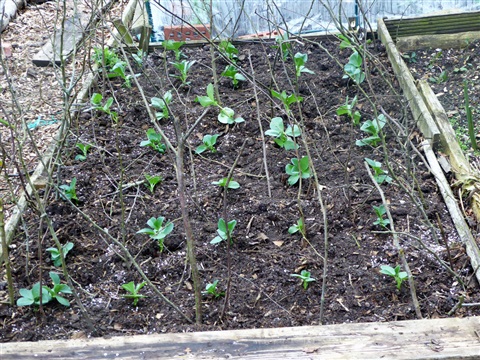
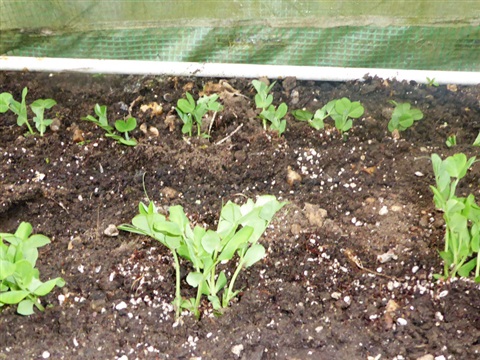
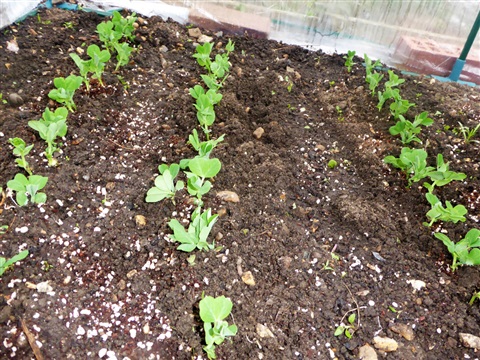
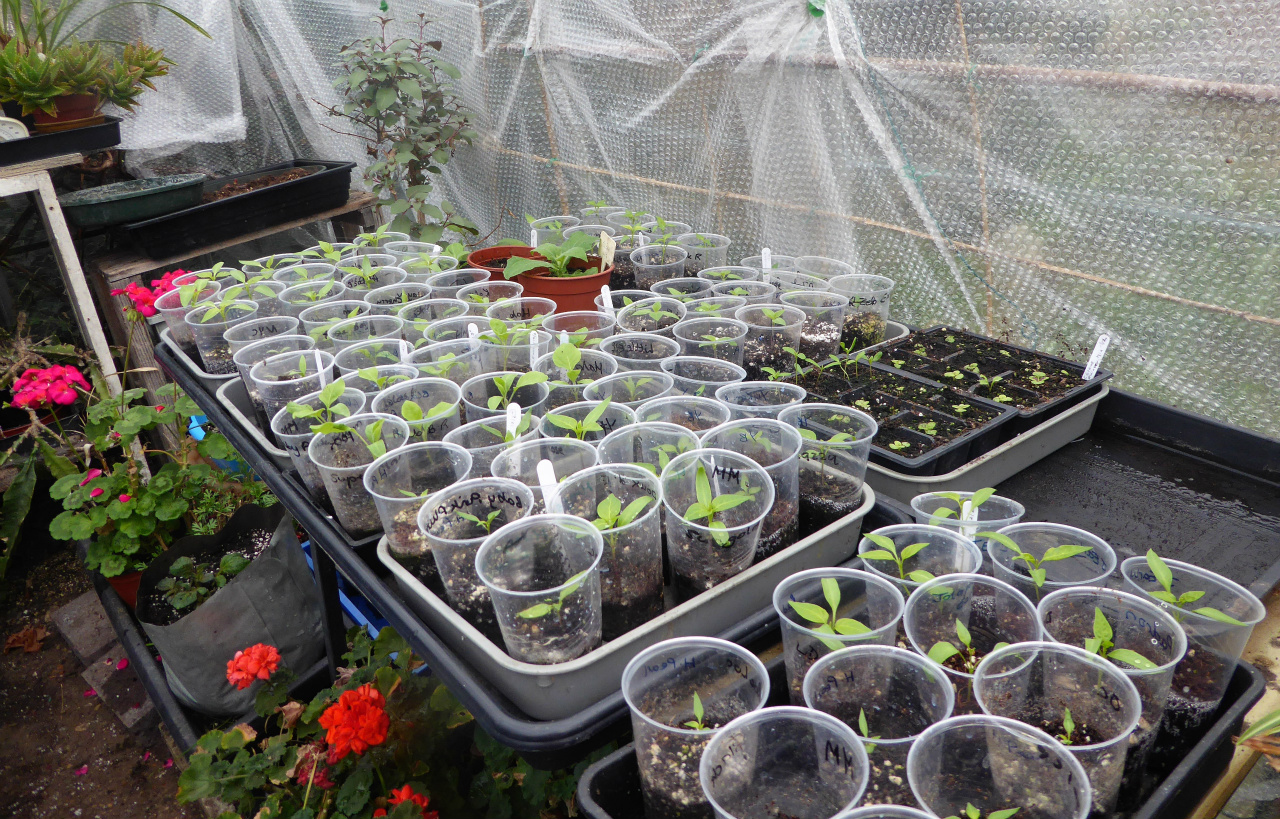
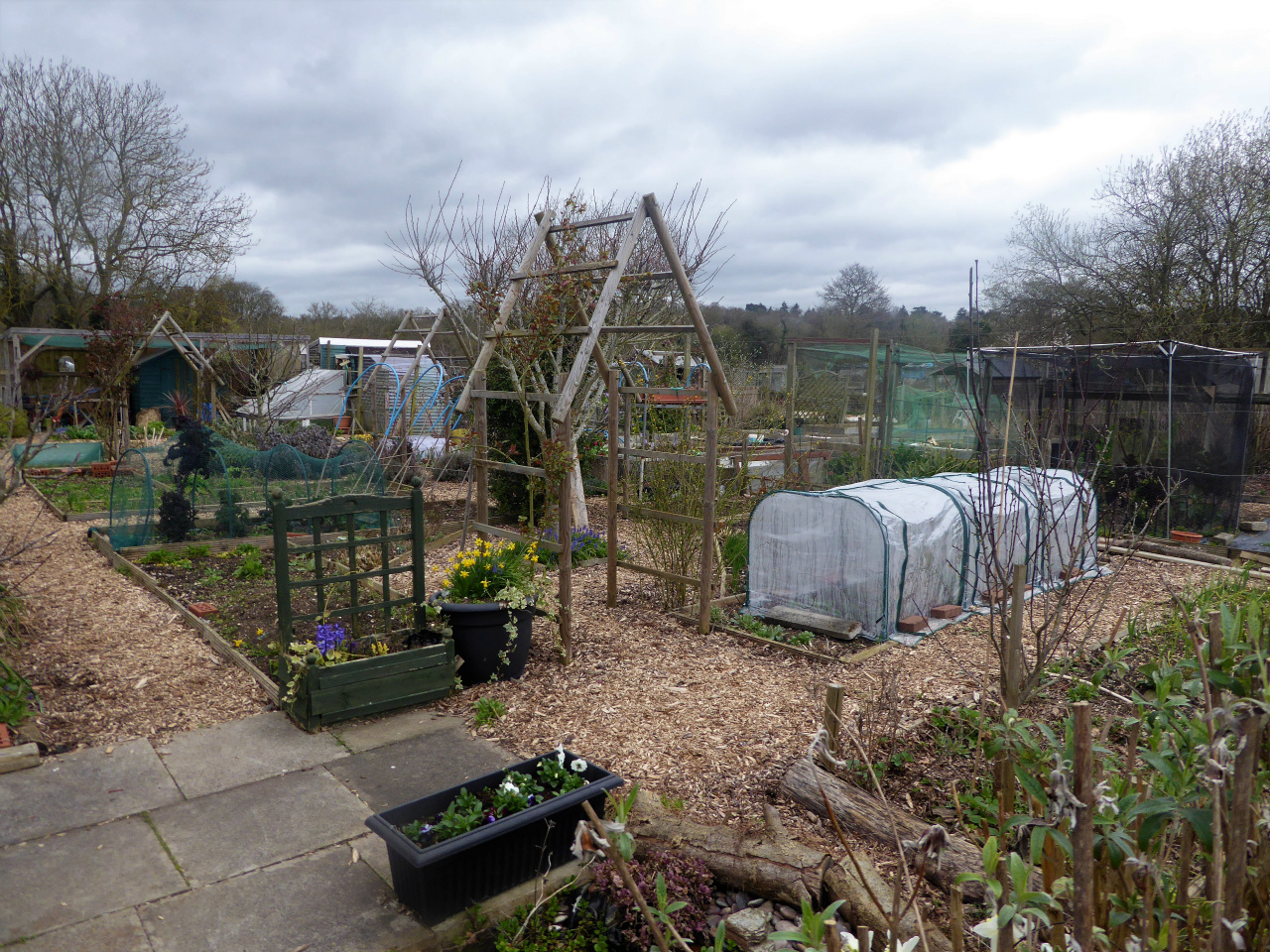

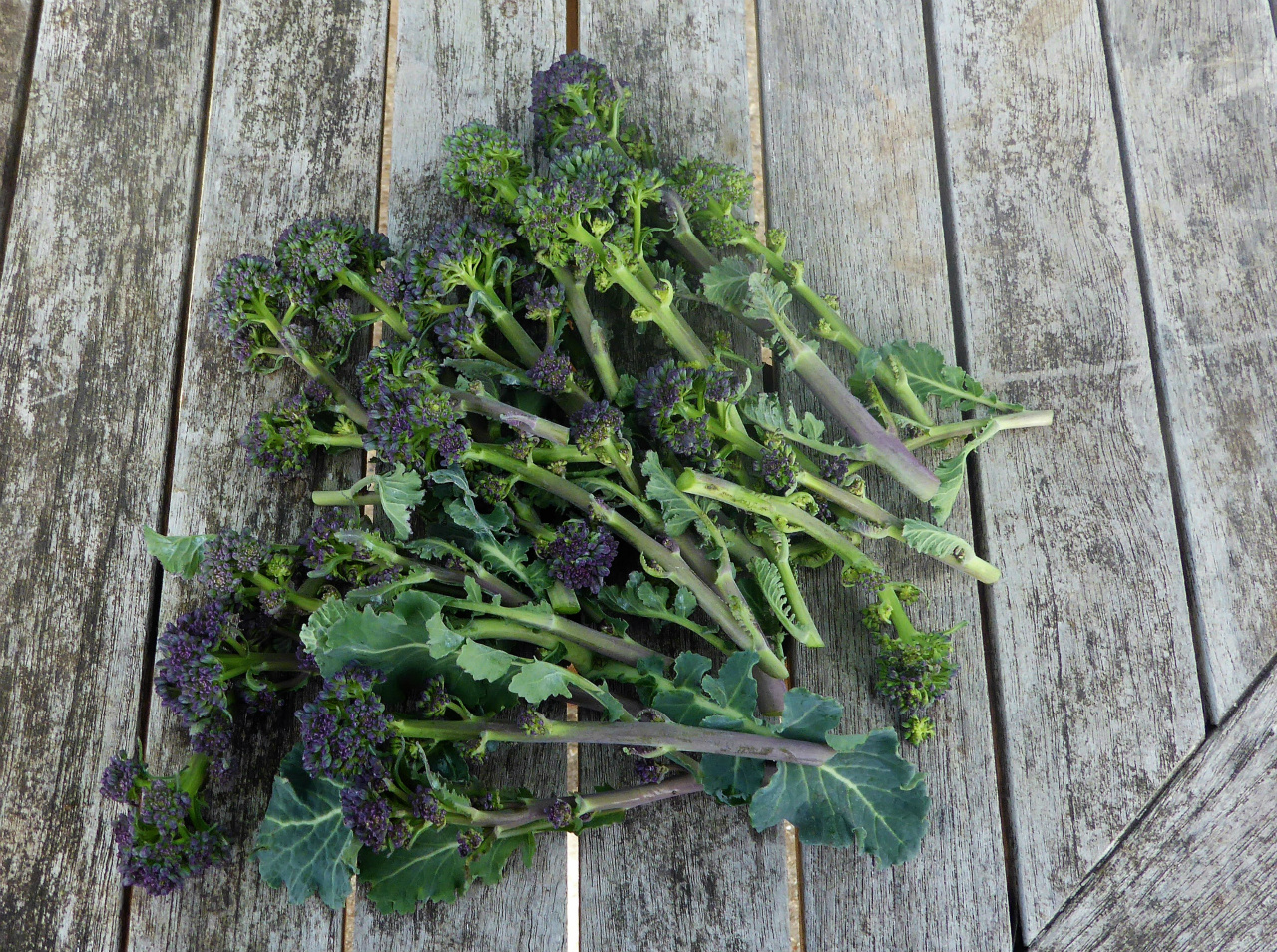
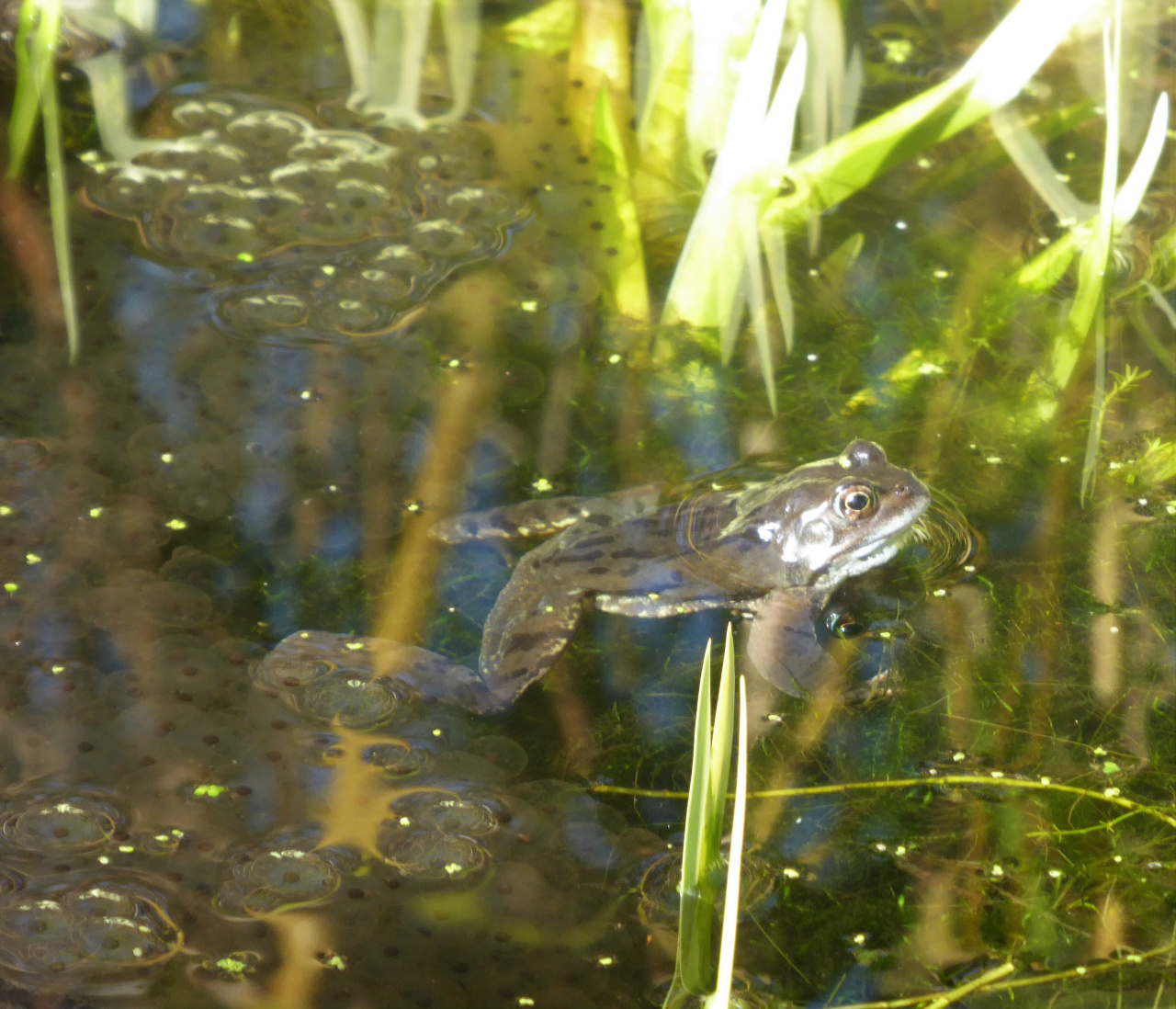

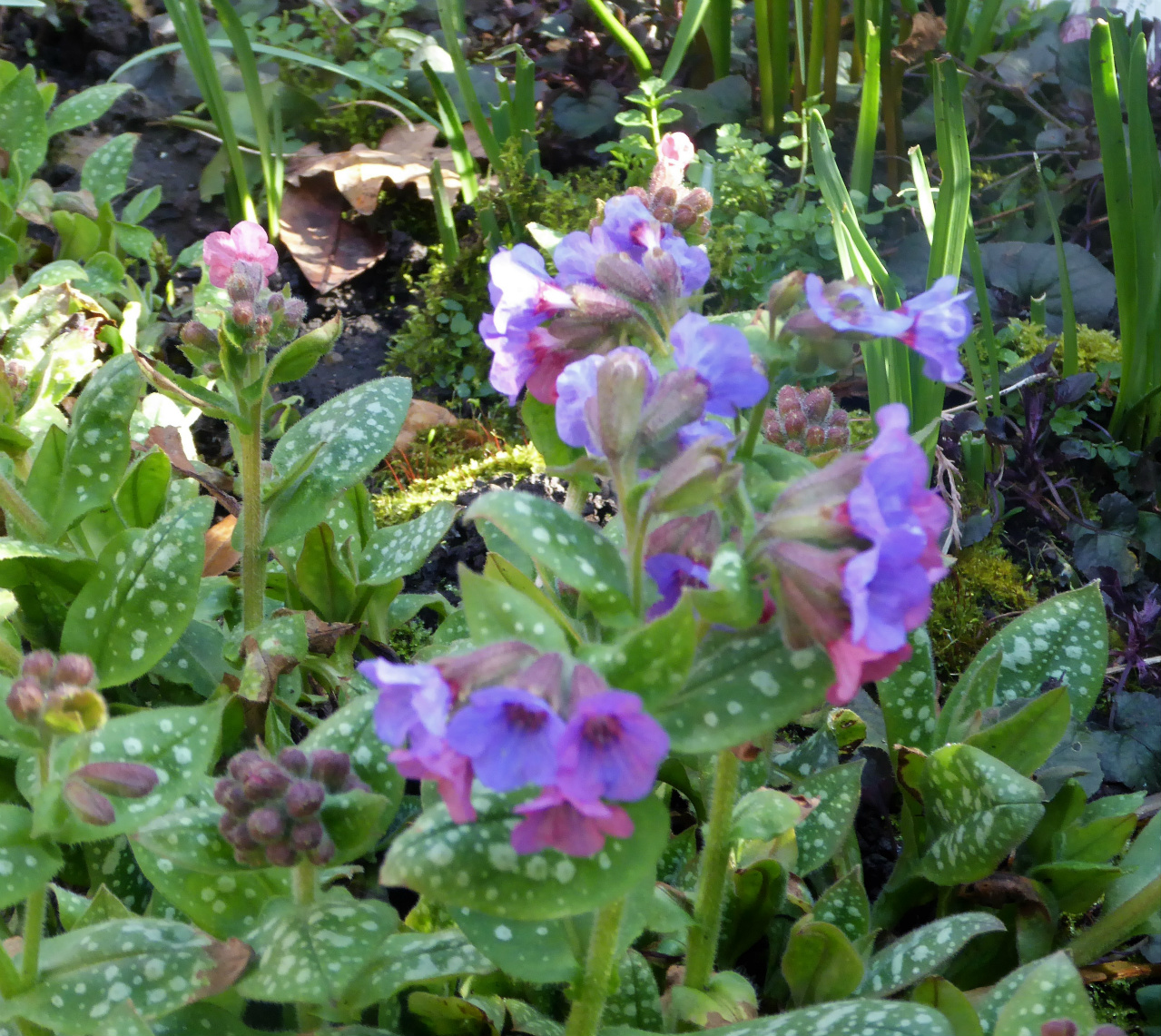
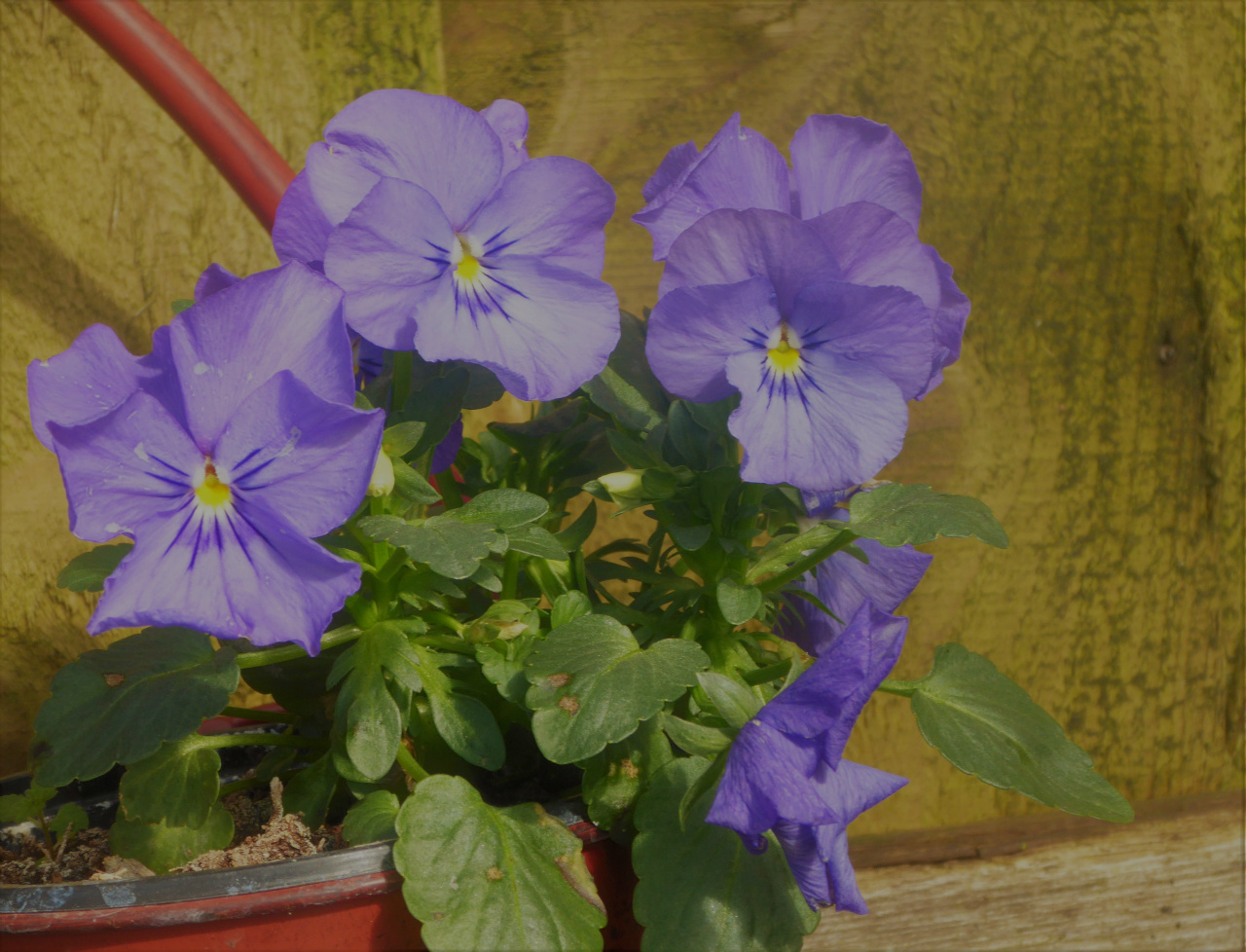


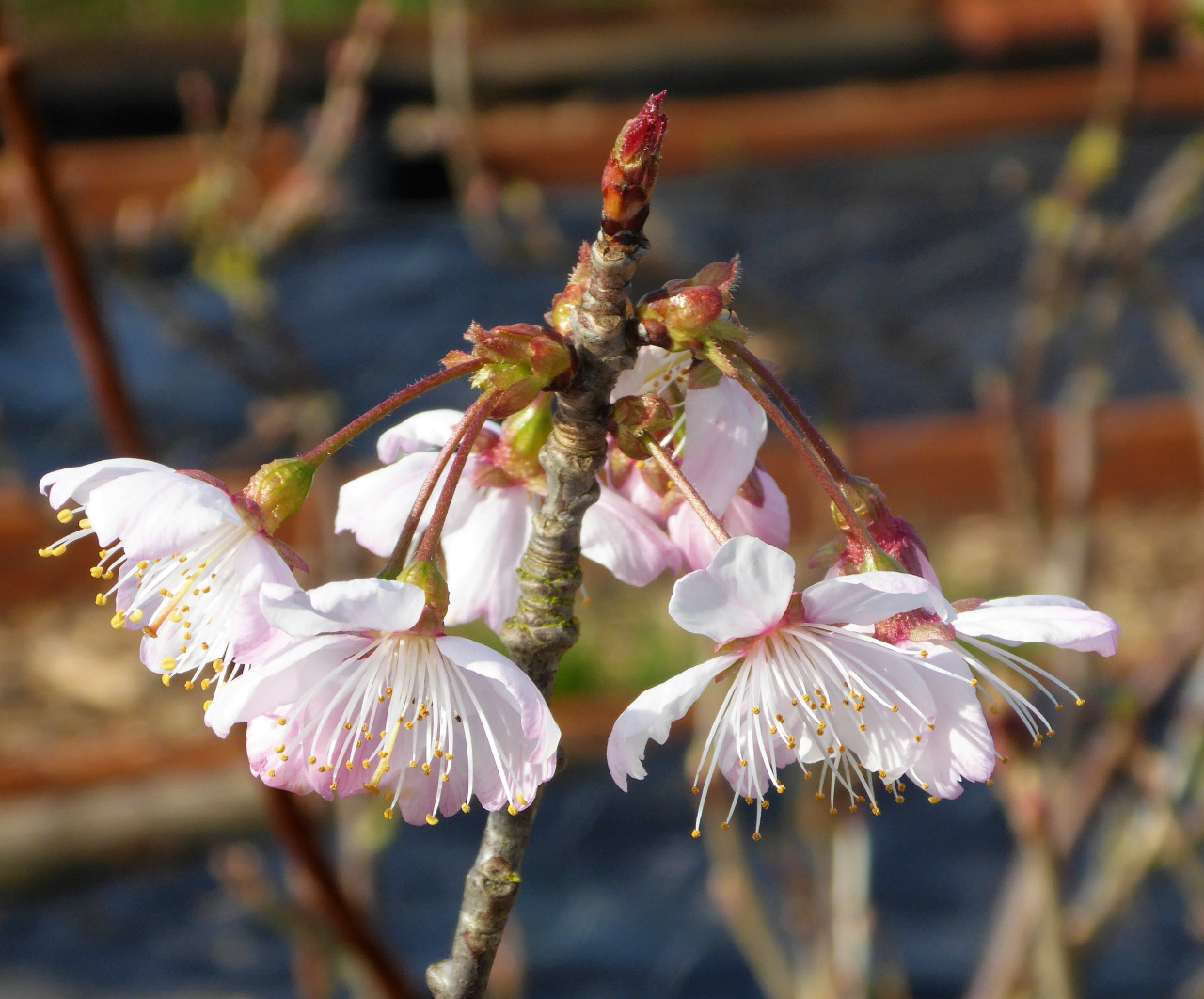
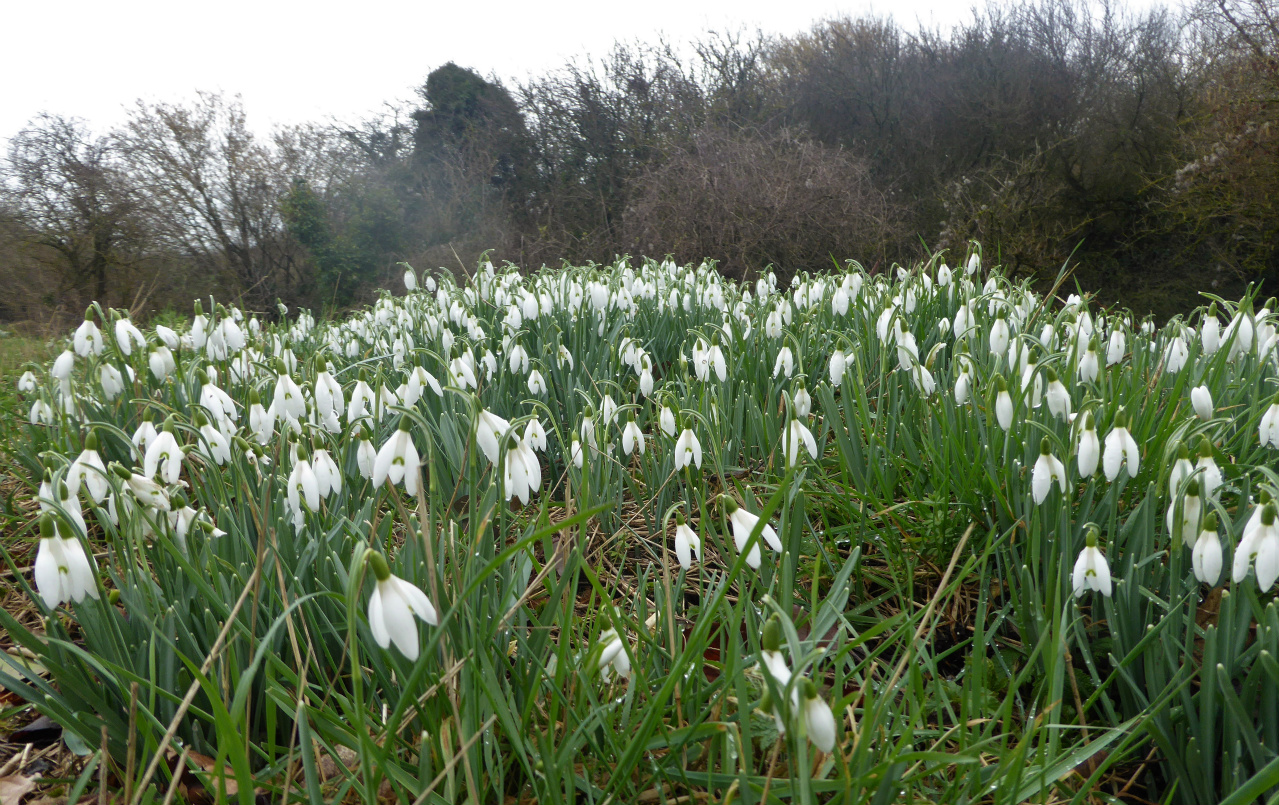
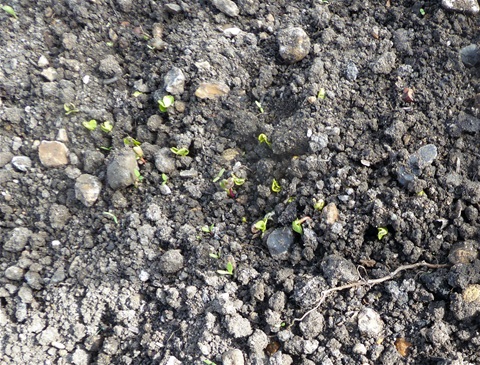

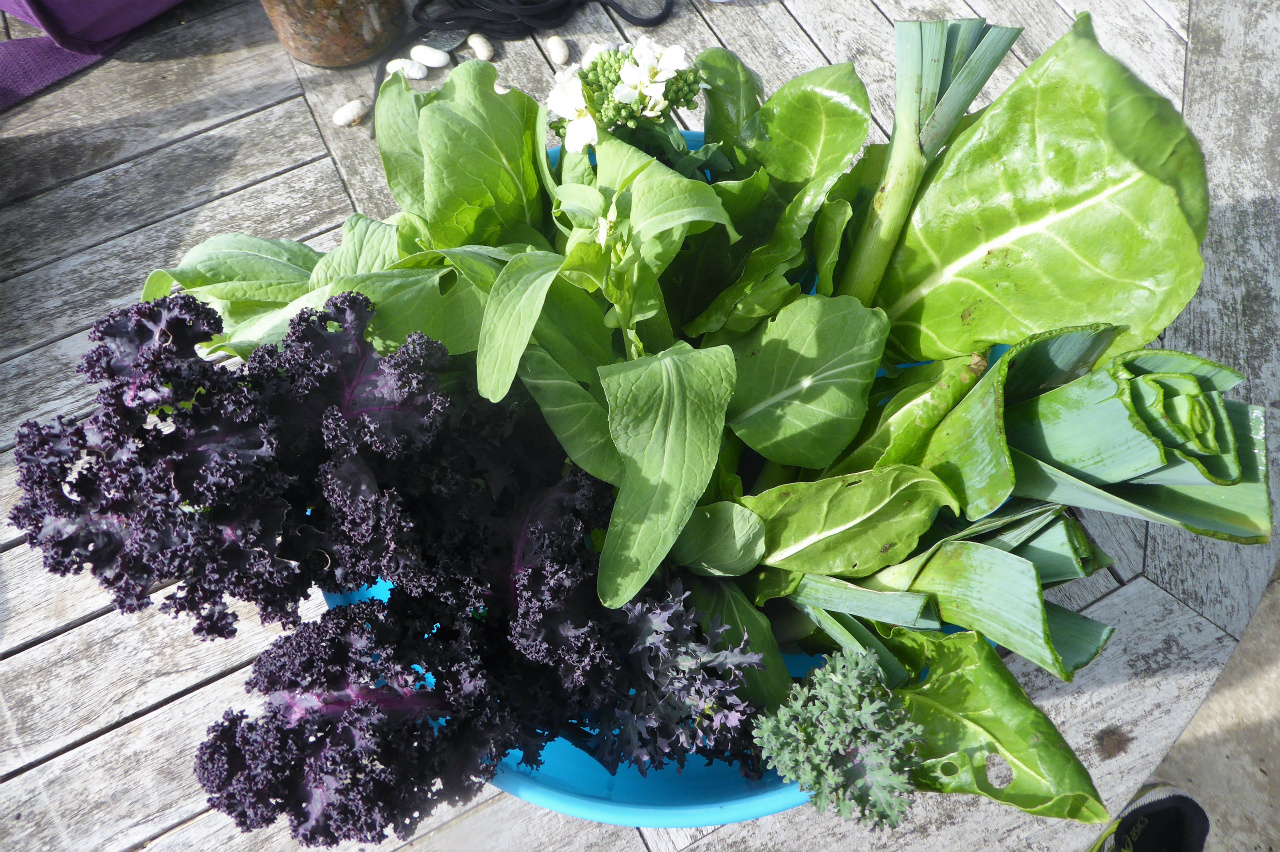

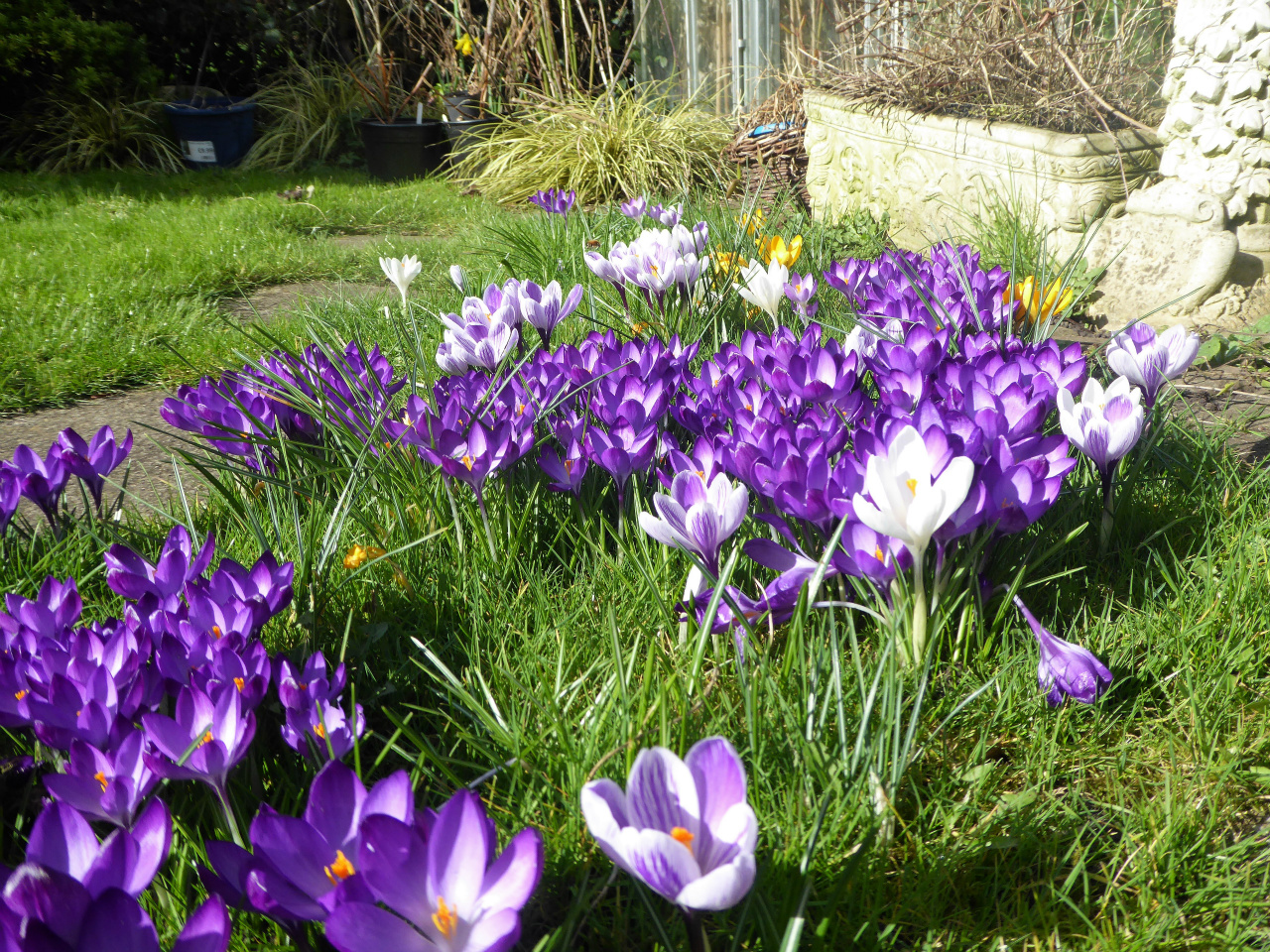
Kathy
At least it happened while we were there...just imagine the volume of water if it had been running for three weeks while we were in India!!!
Trillium
What a nasty surprise having that pipe line burst. But, what is gardening without a few surprises? LOL
Mrs Margaret Clapp
Hi you have a lovely garden. I have a pitcher plant I left it out last year and it went brown I've brought inside a month or so ago. Feeding it mealworms now. unusual flower any advice please
Kathy
HI Margaret. Glad you like the photos, thank you! Pitcher plants are hardier than you might think and good yours lasted the Winter. Message me on info@alitttlebitofsunshine.co.uk for a further reply.
Trillium
Wonderful progress so far though I don't envy you the nettles. They got into my peonies and currants.
Kathy
Nettles really are a difficult problem to crack aren't they?
Beryl
Hi Kathy,
Yacon is very frost tender & an airfrost will kill those first leaves & set it back a while. I would keep it under protection till you are well clear. They grow incredibly fast later on.
Kathy
Thank you for that advice: the voice of experience is invaluable!!